Science activities for preschoolers – where experiments meet fun! Preschool is an excellent time to teach your little ones about the exciting world of STEM: Science, technology, engineering, and math.
Keep reading to discover great resources for your budding scientists that are the perfect mix of fun, creativity, and of course – learning! We will share fun preschool science experiments, science projects, and a worksheet to introduce young children to key science concepts.
Also, while your littles are likely not yet at the age to be filling out paper worksheets themselves, I’ve created a simple “Scientific Method Worksheet” that you can complete together! These are a fun way to teach kids about the scientific method (plus, you can use them as a reference if you want to re=create an activity later!). You can either download my preschool science worksheet template for free on Teachers Pay Teachers by clicking here or click the PDF below.
If you’re looking for more science experiments, we’ve got a post with 50 simple science experiments for children of all ages!
1. Water science experiments
Water – The perfect medium for warm weather experiments and sensory play. These simple preschool science activities will teach kids critical thinking skills while they explore science with water! These fun ideas are great for young kids because they are short but interesting.
Float or sink
This is one of the easiest water experiments, but kids love it! Let your kiddo explore surface tension by gathering a variety of small items from inside and outdoors.
Then, test which ones will float or sink together! Like with all of these experiments, it’s best to ask your preschoolers what they think is going to happen – then take the opportunity to explain what “buoyancy” is as the experiment is happening.
Simply fill up a tub or bucket with lukewarm water, place the items inside, and see what happens! For added fun – Let them create little tinfoil “boats” to carry the items. See how many items you can pile on before the ship sinks.
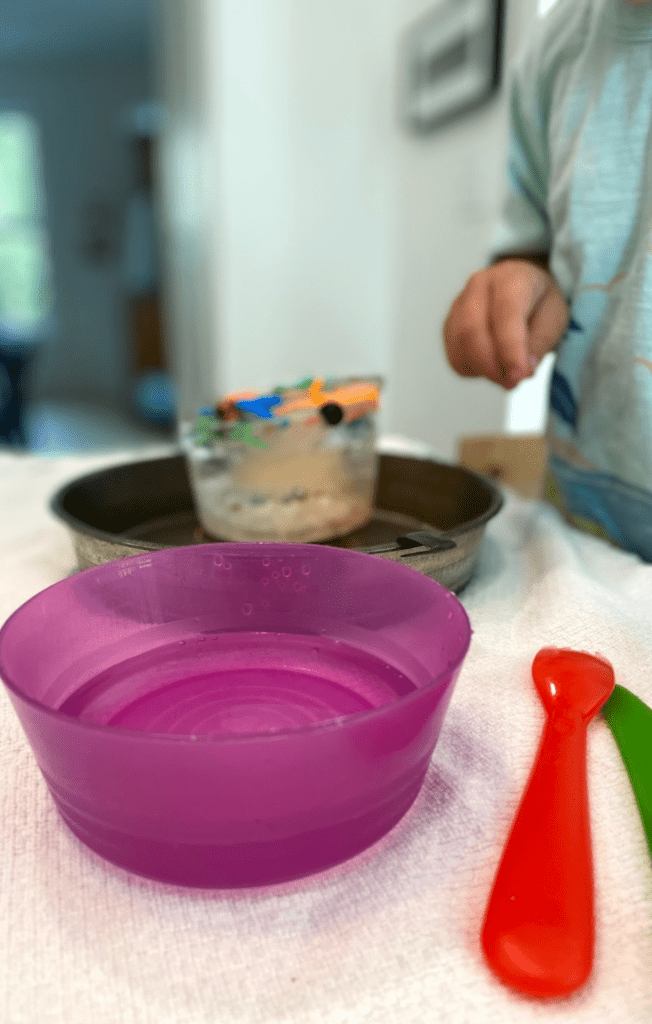
Ice excavation
Let your children experiment with archeology by uncovering frozen treasures of their own! Simply place some small items into a container with water and stick them in your freezer overnight. This can be anything you have on hand – Or, create a themed experiment by buying packs of dinosaurs or marine toys at the dollar store. Even frozen lego could be fun!
Once frozen, place the ice block in a bin or on a cookie tray filled with “excavation tools” (shovels, pre-filled water bottles, salt, etc). Let them use their imagination to uncover what’s inside! Kids love this classic experiment.
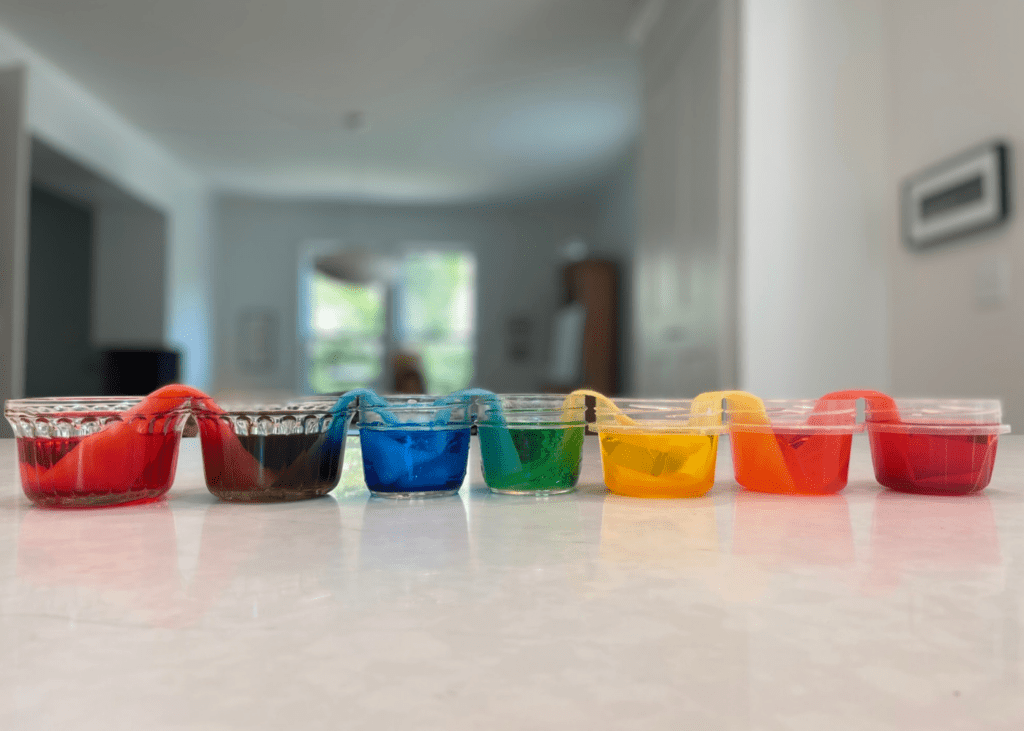
Walking water
Teach your children the wonders of how water can travel via capillary action with just some cups, a paper towel or two, and food coloring. Kids learn about color mixing in this amazing experiment, but it’s as cool as a magic trick! If you want to try it out, check out our post here!
Follow along with this video by Ryan’s World and re-create the experiment with your children at home. This preschool science activity is so much fun that your young ones will probably forget they’re practicing science.
DIY rain gauge
Measure rainfall, just like the meteorologists do! All you need is an empty bottle and a sharpie and you can create this super simple DIY rain gauge at home.
2. Solar science experiments
Sun-based learning is so much fun! Here are some simple ways to learn about solar energy through hands-on science activities.
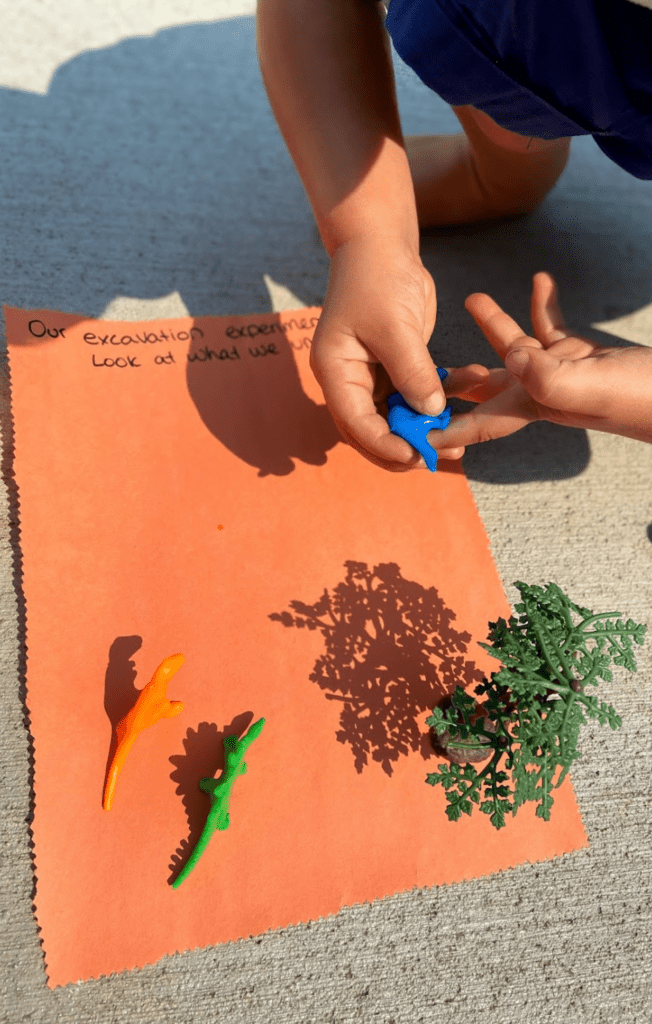
Shadow drawing
Simple, easy, yet engaging – my favorite! Ask your children to gather a few of their favorite toys, grab some scrap paper, and let them trace away along the edges of the shadows that pop up!
In the photo above, we used the items we uncovered during our Ice Excavation Experiment for drawing.
Experiment with moving the items around the page. This will show them how the sun’s orientation impacts the size and shape of the shadows. This is an awesome blended activity… A science experiment and art!
Homemade sun dial
By creating this fun experiment, you can teach young kids about telling time from a young age.
Simply have them create and set up a super-simple sun dial of their own, like the one pictured above.
Next, let them see for themselves how the sun moves throughout the day. This is one fun preschool science activity that they can revisit throughout the day to see how it changes.
Explain that before using clocks, this method was used to tell time. Using just a circular object and a “gnomon” (a vertical stick), our ancestors would tell time by looking at which number the shadow was pointing to throughout the day.
Tracing the shadow line themselves will help them grasp this concept a little more deeply, too. Use PBS’ guide here to learn how to make this activity yourselves!
S’mores solar oven
No campfire to cook this yummy treat? No problem! Make a DIY s’mores oven, like the one from Little Passports, and get to cooking! Combining science and cooking has likely never been so fun. But, be sure to pack extra napkins – these treats are delicious but super messy!
Melting rates with colors
Again, simplicity is key here. Grab some strips of colored construction paper, including black if you have it, and a tray of ice cubes. Ask your little ones which color they think will make the ice melt fastest. For more detailed notes – set up timers and track how long each one takes to melt! This is an excellent opportunity to use those scientific method worksheets that I linked above.
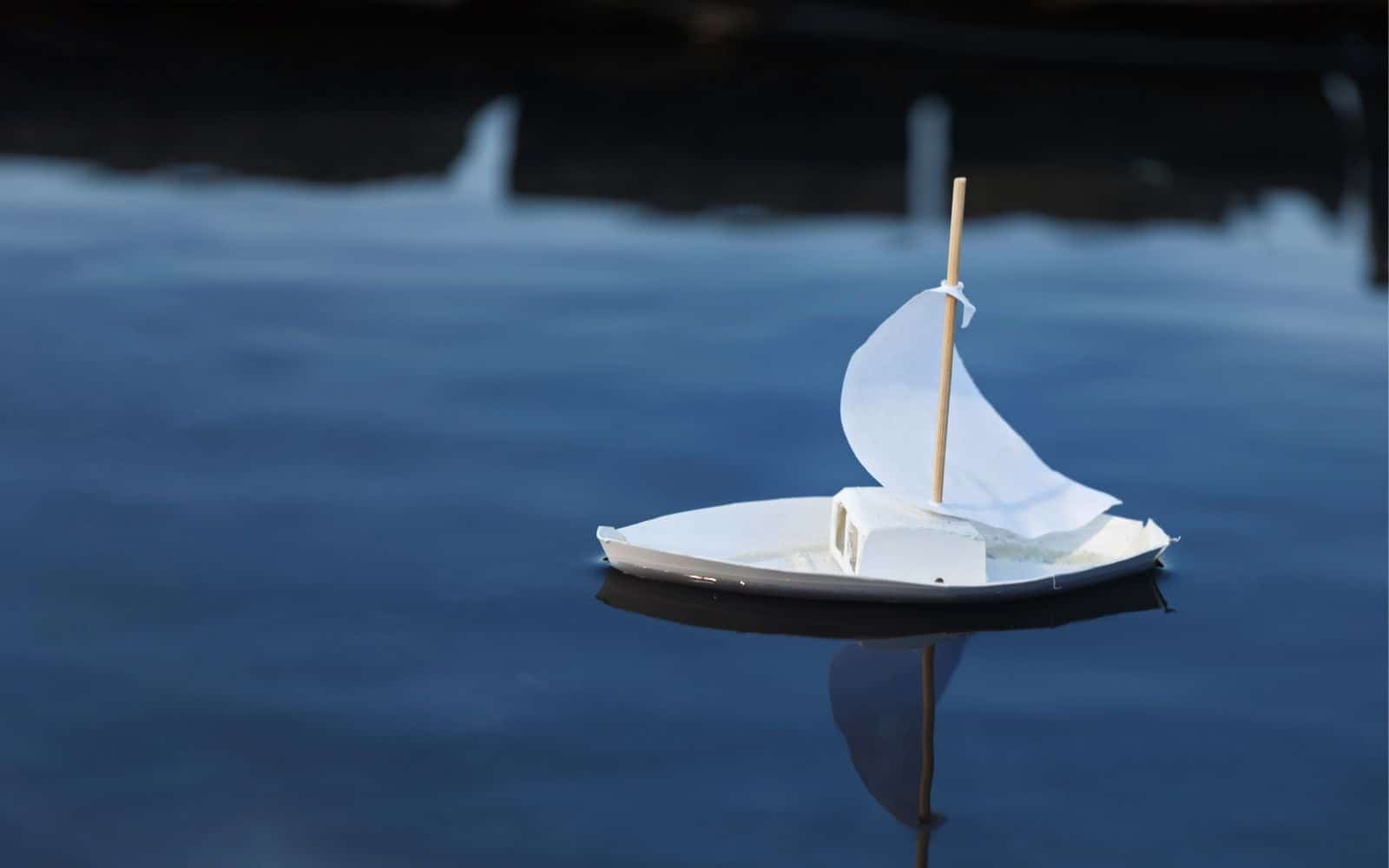
3. Wind science activities for preschoolers
Harness the natural power of wind at home with these exciting and easy science experiments for preschoolers!
DIY kite
Which kid doesn’t love flying kites outside?! Store-bought kites are great, but why not try making them at home?
If you have multiple kids participating, compare which flies better while hypothesizing about why that could be. The best part about this is that you only need some string, sticks, string, and glue! PBS has a great tutorial worth checking out here.
Create your own anemometer
Anemome-what? Isn’t that a mouthful! While preschoolers may struggle to say this fancy name for an instrument that measures wind speed and pressure, the activity itself is actually quite easy.
Watch DIY Project’s video, then create your own anemometer and set them up outside to watch them spin in the wind! This is a fun way to learn about wind science in a way that kids understand.
Wind-power boat
I am simply in love with Clearway’s simple yet exciting tutorial about building your own renewable energy-powered boat! Click this link to have a read for yourself, and check out their prompts for scientific conversations to have with your young learners. Once it’s created, take your new boat out on the water – whether it’s in the tub, your pool, or maybe even to the lake!
4. Earth-based experiments
Growing up in a rural community, our favorite kinds of games and activities were the ones that let us get our hands dirty! So, if your little one is as hands-on as my siblings and I were, these are great activity choices for you and your little scientists.
No-bake fossils
Is your young one a budding archaeologist? Maybe they have a fascination for all things fossilized? Check out this tutorial for no-bake fossils that they can create themselves by Crafts by Amanda – If they weren’t into fossils before, they likely will be now!
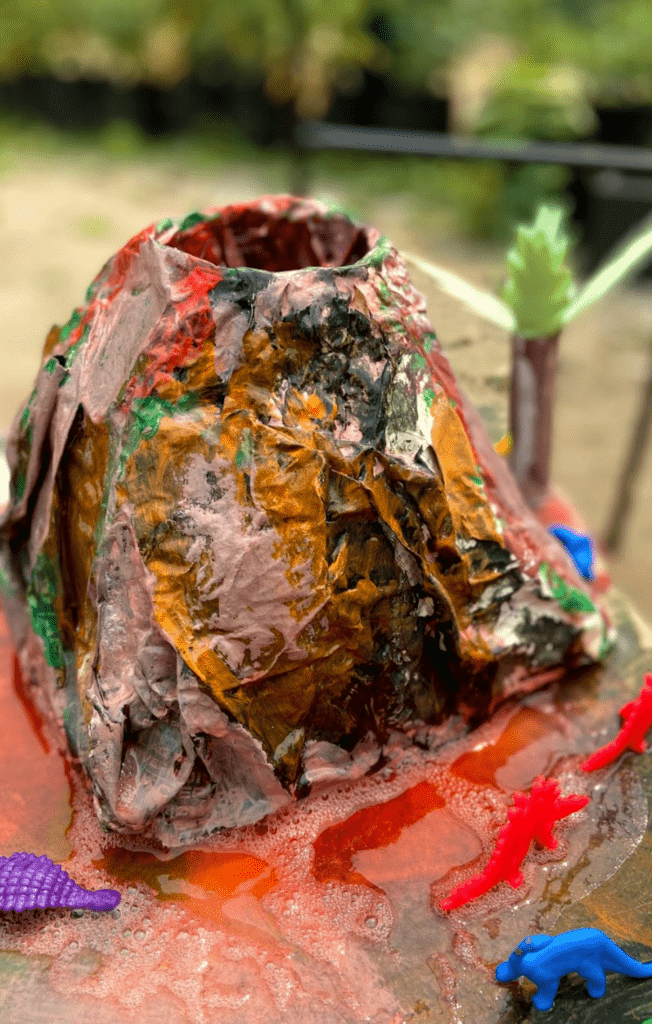
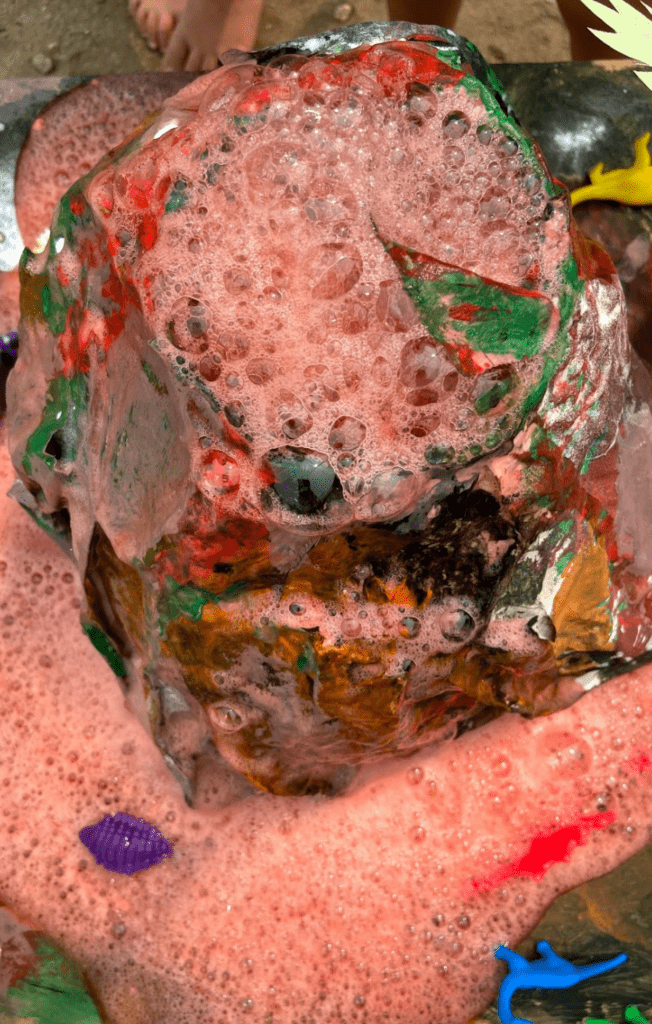
Color-changing volcanoes
If you want to recreate this experiment, check out our DIY post! With a short supplies list of only a cup, water, baking soda and vinegar, dish soap, and food coloring, this one is sure to be a new favorite! Preschoolers love watching bubbles ooze out of the volcano, and the food coloring makes for a fun colorful surprise!
How to make a volcano:
- Put a tall cup, empty bottle, or tall jar in a sturdy place (outside is best – These can get messy!)
- Using a funnel, put 1 part vinegar and 1 part lukewarm water, and 1 tbsp of food coloring into the cup
- If you want, you could add 1 tbsp of dish soap for a more dramatic reaction
- In another container, mix 1/2 cup baking soda and 1/2 cup water to make a slurry
- Take the funnel out of your volcano, pour in the baking soda slurry, and move your hands out of the way! It will react quite quickly
We took this experiment to the next level. It was a 3-day event! On day one we made a paper maché volcano, then on day 2 we painted and decorated it, and on day 3 we made it erupt. I’ve also done this experiment by making sand volcanoes, snow volcanoes, and just in the jar itself when I needed simple science experiments. Every single version has been a hit!
Also, the only reason this is here (and not in the section below), is that it’s an earth science activity to get them thinking about the way volcanoes work. When a volcano erupts, the action is a physical change (even though it requires chemical interaction between minerals to cause the eruption itself).
5. Chemical reaction and physical change activities for preschoolers
This is perhaps the most exciting science activity category, for myself and preschoolers! Watching them shout in delight as they get to watch chemical reactions boil, fizzle, and explode is always so much fun!
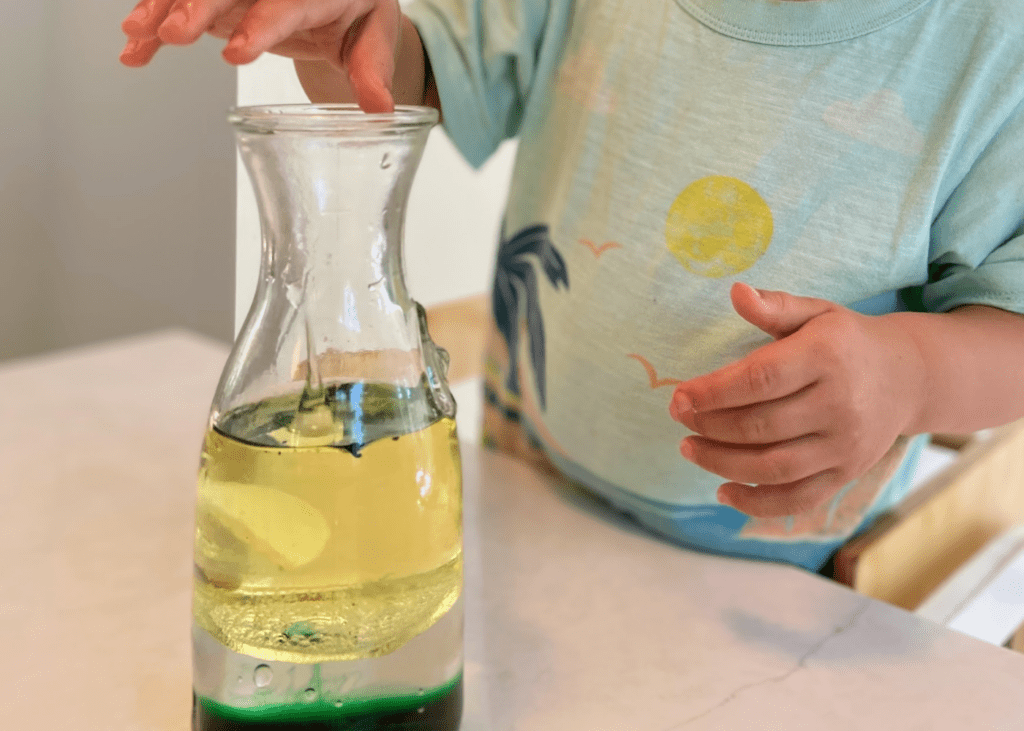
Build your own lava lamp
This classic science activity is tons of fun, and inspires such interesting conversation! Plus – It’s cheap to make, easy to find the materials, and provides an opportunity for a great conversation about chemical reactions, the way different mediums interact (oil and water), and how “new” colors can be created by mixing together primary colors.
Check out our tutorial here!
How to make a lava lamp:
- Fill your jars with 2/3 oil and 1/3 water
- Drop some food coloring in (a few drops is enough – you can always add more later!)
- Add Alka seltzer tablets to the mix. Start with half of one, then let them choose how many to put at a time!
Experiment with different water temperatures, too, to see if this changes the reaction. What happens when you use warm water? What about cold?
Self-blowing balloons
Teach your young ones about releasing stored energy by helping them visualize what this looks like. While the concept itself will be better grasped at an older age, this is a super-fun introduction to the concept. The Sustainable Energy Authority of Ireland created a great video, Self-Inflating Balloon Experiment, and I’d highly suggest you check it out!
Melting with salt & ice
Sounds simple, right? It is! With some quick planning ahead, you can make frozen ice blocks that will fascinate your little ones while teaching them about freezing points in different mediums. Paging Fun Mums has an awesome article on this activity – just click here.
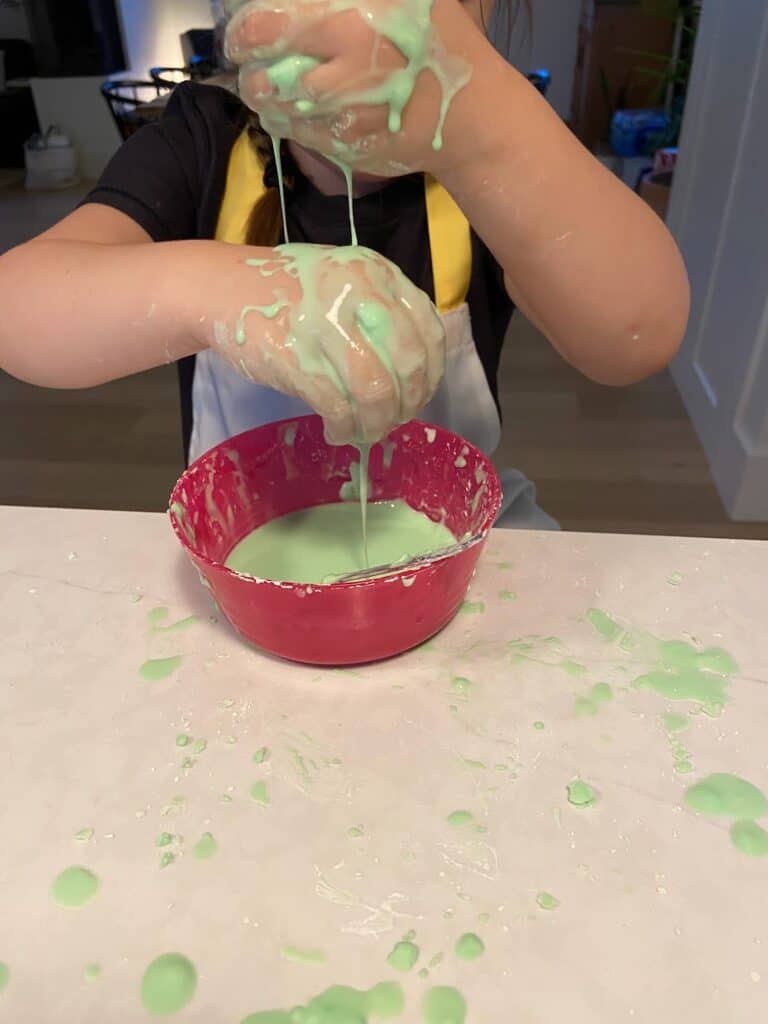
Oobleck
This is Non-Newtonian fluid is a science favorite! It’s only got two ingredients (or three, if you add color), but has super cool scientific properties. Your little ones can learn about the states of matter while having some sensory play opportunities with this fun and messy activity. Don’t worry, though, it’s easy to clean!
Check out our tutorial here!
Other science experiments to try
Static electricity experiment
Sure, you could demonstrate static electricity by showing your kiddos how they can shock people after going down the slide, or you could make your hair stand on end by rubbing a balloon in it… But why not make a craft to see static electricity in action? This static electricity butterfly will flap its wings if you can generate enough static electricity!
5 Senses nature walk
Next time you head out on a nature walk, take this worksheet with you! Or, just work through the process verbally with your little ones. Help them develop their senses by encouraging deep engagement with the natural world around them by using all five of their senses. Just be sure to carefully supervise what they touch or taste, as not all things in nature are kid-friendly!
Conclusion
Your preschoolers are sure to love exploring these simple science activities! I hope you enjoyed reading about these simple science experiments and preschool activities, as they are some of my favorite ways to introduce little kids to science. As they experiment, explore, and learn about scientific principles, they will nurture a love of science while having so much fun.
Did you try any of the science experiments listed above? We would love to hear how it went!
More science posts
Searching for more science experiments and science-related activities to do with your little ones? Check out this category to see all of our posts about science for kids!

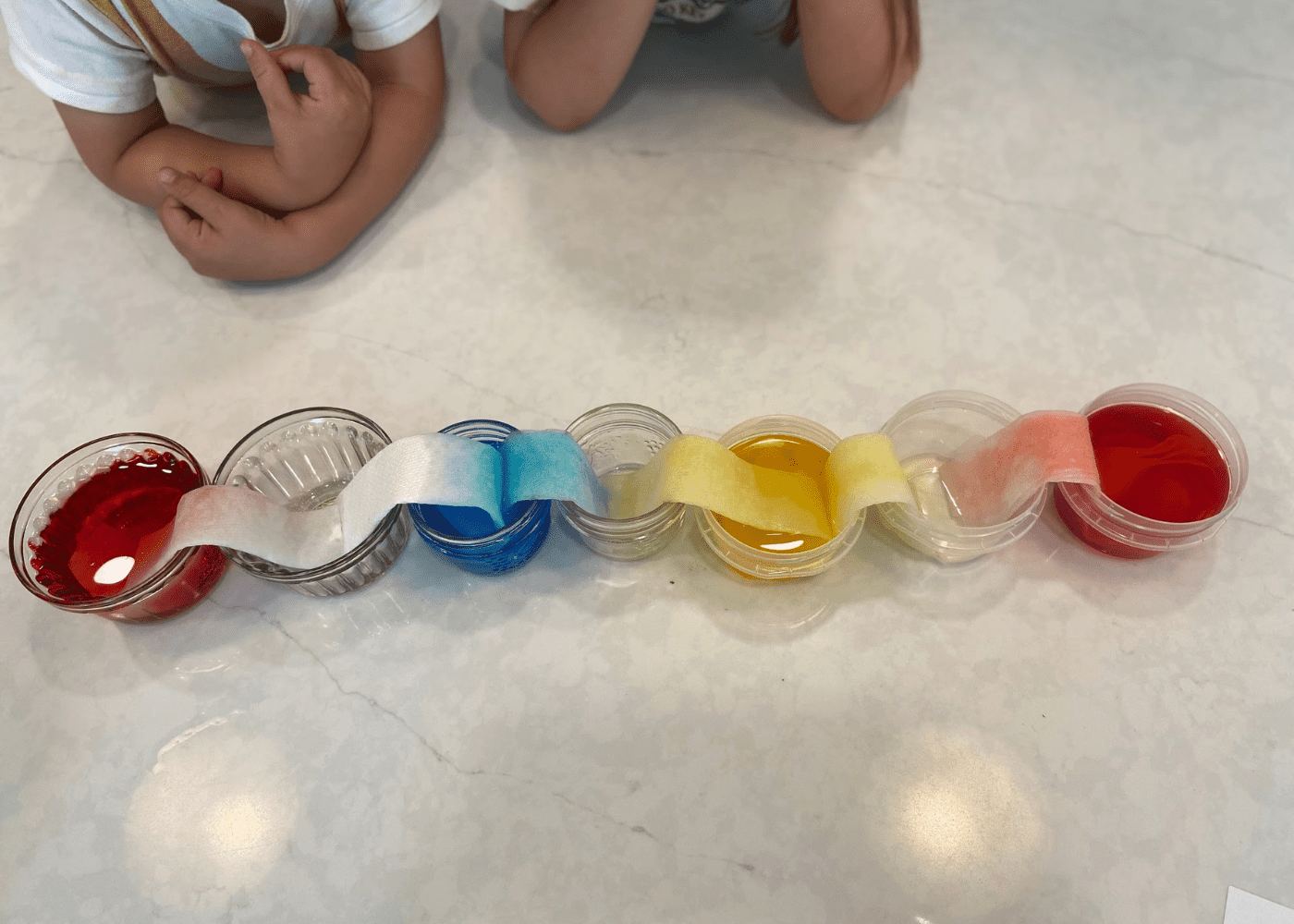
Leave a Reply